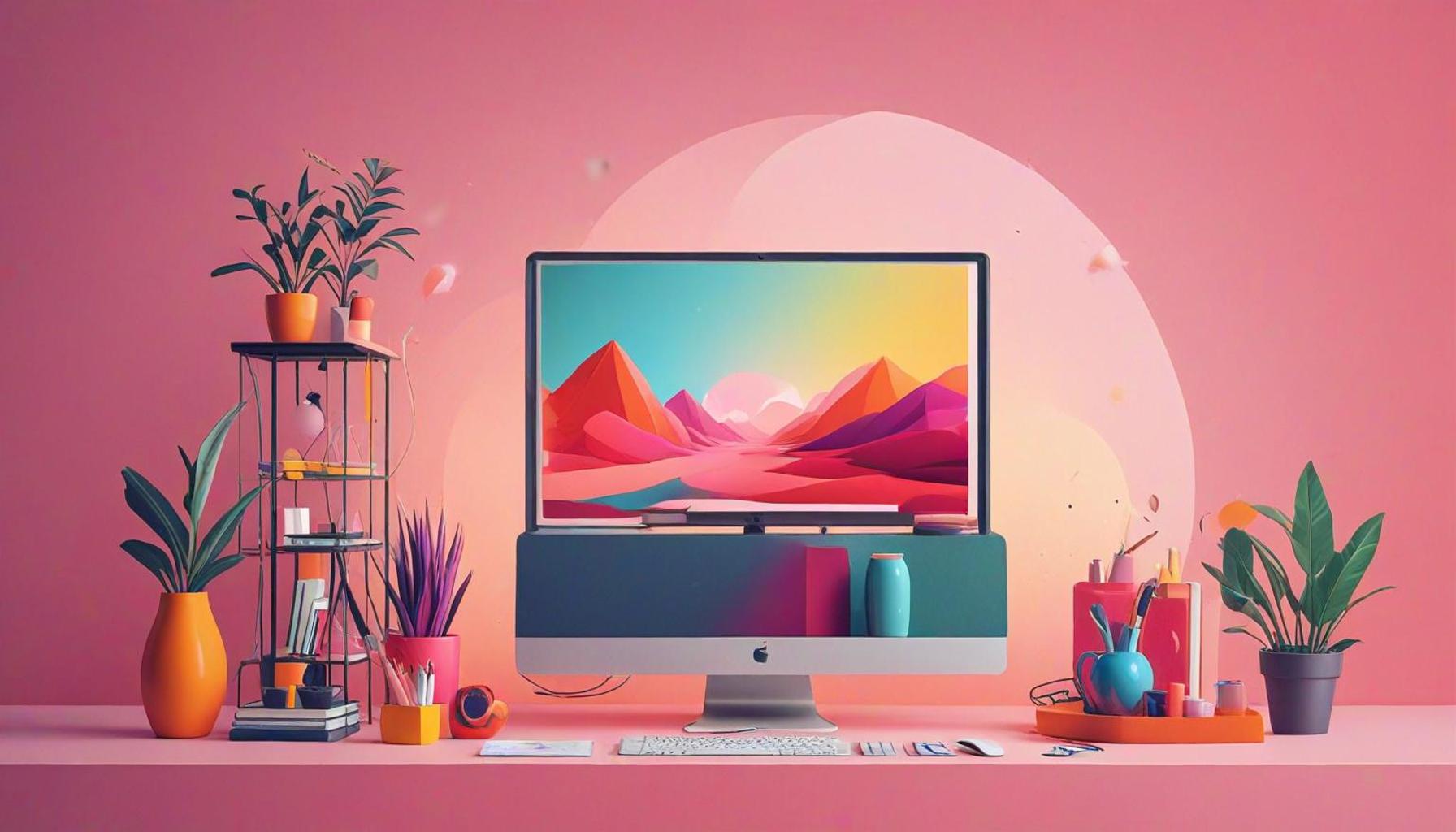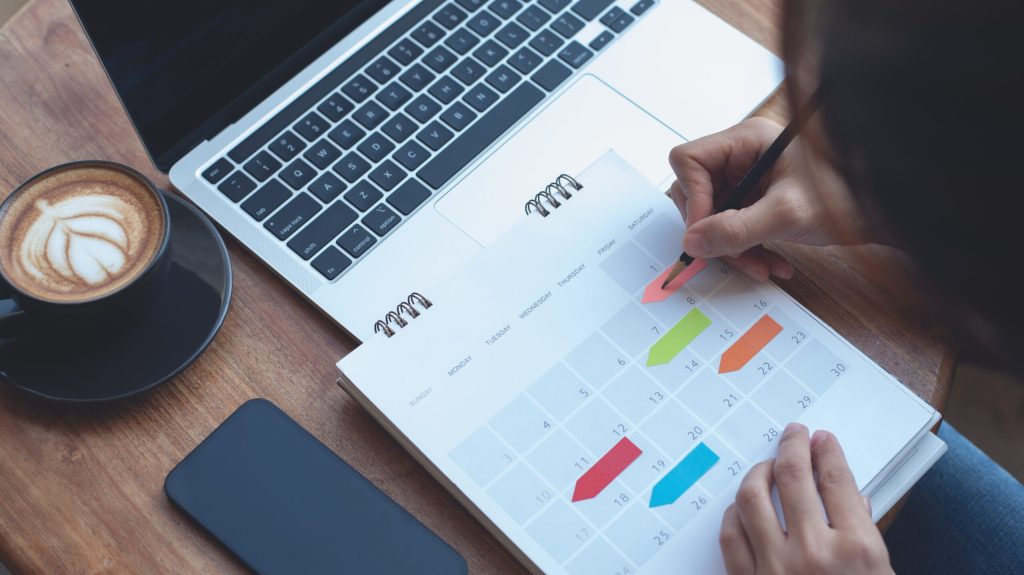Digital Minimalism: How to Reduce Stress Through Virtual Organization

Understanding Digital Decluttering
In a world dominated by screens, where notifications constantly vie for our attention and social media platforms offer an endless scroll, many individuals are finding themselves bogged down by a deluge of digital noise. This incessant stream of information not only fills our minds but also spills over into our emotional lives, leading to heightened stress and anxiety levels. The approach of digital minimalism provides a viable escape route from this chaos, offering a pathway to a more intentional and fulfilling engagement with technology.
Picture a lifestyle where each online interaction has purpose, where your digital footprint reflects your personal and professional priorities. The concept of digital minimalism hinges on several key advantages:
- Reduced Anxiety: By trimming down unnecessary apps, emails, and online distractions, individuals often report a noticeable decrease in their overall anxiety. For example, a study elaborated on in the journal “Environmental Psychology” indicates that reducing digital clutter directly correlates with improved emotional well-being.
- Increased Focus: When distractions are curtailed, the mind can concentrate on essential tasks. Professionals who practice digital minimalism frequently find they can work more efficiently, thereby completing projects faster and with greater accuracy.
- Improved Mental Clarity: A tidy digital space translates to a clearer mindset. Simplified virtual environments help individuals think more critically and creatively, which can be especially beneficial in high-stakes work settings.
Steps to Implement Digital Minimalism
The journey toward embracing digital minimalism involves a series of deliberate steps aimed at restructuring one’s online presence. Here are some actionable strategies:
- Assess your digital tools and platforms: Start by evaluating the apps and websites you regularly visit. Ask yourself if they contribute to your goals or simply drain your energy. For instance, consider whether the hours spent on social media are fostering meaningful connections or merely leading to mindless scrolling.
- Reduce notifications: Limit alerts from both your smartphone and computer. By turning off non-essential notifications, you can effectively diminish the constant interruptions that disrupt your workflow and thought processes.
- Unsubscribe from unnecessary content: Take charge of your inbox by unsubscribing from newsletters and promotional emails that no longer pique your interest. This simple action not only declutters your digital space but also creates a calmer digital browsing experience.
As the article unfolds, it will delve deeper into how reducing stress through virtual organization and embracing digital minimalism can significantly boost productivity and nurture a more balanced mental state. The journey to declutter your digital life is not only achievable but can also lead to profound changes in how you interact with technology. Stay tuned to explore the transformative impacts of this minimalist approach on your daily existence.
DISCOVER MORE: Click here for tips on maximizing space

The Impact of Digital Clutter on Mental Well-Being
As technology continues to evolve and integrate deeper into our daily lives, the concept of digital clutter has emerged as a pressing concern. Many people in the United States, for instance, find themselves juggling multiple email accounts, endless social media feeds, and a plethora of apps designed to help, yet often hindering their productivity. According to a report from the Pew Research Center, about 60% of adults say that technology contributes to a significant level of stress in their lives. A chaotic digital ecosystem can exacerbate feelings of overwhelming anxiety and fatigue.
The link between digital clutter and mental strain is not just anecdotal. Research indicates that an overabundance of digital content can negatively affect cognitive overload, making it difficult for individuals to prioritize tasks effectively. In fact, a study published in the journal “Cognitive Science” found that individuals exposed to too many choices reported feeling less satisfied and more anxious. This overwhelming dynamic can lead to a diminishing sense of control and focus, hindering both personal and professional growth.
Finding Clarity Through Digital Organization
Embracing digital minimalism is about taking back control and creating a space—both virtual and mental—that aligns with our core values and aspirations. Individuals who adopt this mindset often experience profound shifts in their emotional landscape. Here are ways in which digital organization can lead to reduced stress:
- Establishing Clear Boundaries: By limiting the number of applications and websites used on a daily basis, users can cultivate a more streamlined digital environment. Clear boundaries help reduce distractions that lead to stress and anxiety.
- Enhancing Productivity: A focused digital setup allows for increased efficiency. When unnecessary tabs and apps are closed, individuals can tackle their tasks with greater clarity and purpose, leading to improved outcomes and a sense of accomplishment.
- Creating Meaningful Digital Connections: Digital minimalism encourages users to prioritize quality over quantity in their online interactions. By cultivating a smaller circle of meaningful connections, individuals can experience richer communication and lower stress levels.
Implementing a digital minimalism framework is not merely about cutting back on devices or limiting social media usage; it is about fostering an intentional relationship with technology. By reevaluating how we interact with the digital world, we free up cognitive resources that can lead to a higher quality of life. As we proceed with this exploration of reducing stress through virtual organization, it is imperative to understand that the journey towards a minimalist digital lifestyle is both profound and achievable.
| Advantage | Details |
|---|---|
| Enhanced Focus | Digital minimalism encourages reducing distractions, allowing for deeper concentration on tasks. |
| Stress Reduction | By organizing digital spaces, individuals experience less clutter, which ultimately leads to lower stress levels. |
| Improved Decision-Making | Having fewer choices allows for clearer decisions, enhancing productivity and user satisfaction. |
| Time Management | Effective virtual organization means less time spent searching for information, giving more time for valuable activities. |
Engaging with the principle of digital minimalism supports a holistic approach to reducing mental clutter. Organized virtual environments can significantly contribute to mind clarity, which is essential for creativity and productivity. Moreover, with an emphasis on proactive organization, users can streamline their workflows and prioritize what truly matters. Virtual organization promotes a decluttered digital landscape, essential for today’s fast-paced life. As users adapt these practices, they realize the long-term advantages of improved mental health and increased well-being. Consider amending your digital habits with minimalism in mind; the impact can be profound.
DIVE DEEPER: Click here to discover more about minimalist living
Adopting Digital Minimalism in Everyday Life
Implementing digital minimalism involves more than simply decluttering virtual spaces; it encompasses a radical lifestyle change that redefines one’s engagement with technology. This transformation can greatly alleviate stress, creating a more harmonious balance between digital interactions and personal well-being. Here are some practical strategies to adopt this minimalist mindset:
1. Conduct a Digital Audit
Start by performing a comprehensive digital audit of your devices. Identify the apps, subscriptions, and accounts that no longer serve a purpose. A staggering 69% of Americans confess to feeling overwhelmed by the sheer volume of emails received on a daily basis. By unsubscribing from unwanted newsletters and deleting unused accounts, individuals can create a more serene digital backdrop.
2. Curate Content Mindfully
Craft your digital feeds and sources intentionally. Instead of passively scrolling through social media platforms or news aggregators, take the time to follow accounts and subscribe to sources that align with your values and interests. According to a study from Harvard Business Review, a significant proportion of users admit that medial content overload leads to heightened anxiety. By curating content effectively, you not only reduce mental clutter but also enhance the overall quality of your online experience.
3. Schedule Digital Downtime
In today’s fast-paced environment, where notifications ping incessantly, allocating digital downtime is crucial for mental clarity. Health experts recommend designating specific hours of the day as “digital-free zones,” allowing individuals to engage in offline activities that nurture mental wellness. For instance, spending time in nature or pursuing hobbies can lead to a 43% improvement in mood and cognitive focus, according to research conducted by the Journal of Happiness Studies.
4. Leverage Tools for Clarity
Taking advantage of digital organization tools can significantly streamline your workflow. Applications designed for minimalist task management, such as Todoist or Trello, can help individuals break down goals into manageable tasks while limiting distractions. A survey by the American Psychological Association revealed that users of focused productivity apps experienced reduced levels of stress and an enhanced sense of accomplishment as they could visually track their goals.
5. Re-evaluate Your Online Presence
Consider the implications of maintaining a vast online presence. A recent study highlighted that nearly 75% of job seekers encounter employers who research candidates on social media networks. Feeling pressured to maintain a polished online persona can lead to burnout. By scaling down the number of platforms you engage with, you can mitigate the stress caused by the constant need for content creation and curation.
Ultimately, the journey toward digital minimalism requires dedication and intentionality. As individuals embrace these practices, they reclaim valuable mental resources, enhance their overall productivity, and, most importantly, cultivate a lifestyle that harmonizes technological interactions with personal fulfillment.
DISCOVER: Click here for more insights
Conclusion: Embracing Digital Minimalism for a Balanced Life
In a world increasingly dominated by technology, digital minimalism emerges as a transformative strategy to reclaim control over our online lives. By systematically decluttering our digital environments and intentionally curating the content we consume, we not only reduce stress but also enhance our overall mental well-being. The actionable steps described—such as conducting digital audits, scheduling digital downtime, and leveraging productivity tools—serve as essential guideposts along this journey of simplification.
As we navigate the complexities of modern life, it’s crucial to recognize the relationship between our digital habits and our mental health. Studies have shown that a significant portion of the population experiences anxiety linked to digital overload. Thus, adopting a minimalist approach encourages mindfulness in our technological interactions, allowing us to engage with intention rather than habit. Research corroborates this, indicating that a structured digital presence and decreased engagement with unworthy platforms can lead to marked improvements in mental clarity and emotional stability.
Ultimately, the pursuit of digital minimalism invites us to not just reduce clutter but to re-evaluate what is truly valuable in our lives. As individuals foster this mindset, they pave the way towards a more fulfilled existence, where technology supports rather than overwhelms. By embracing these principles, we can champion a balanced lifestyle, turning our screens into tools of empowerment rather than sources of stress.
Related posts:
How the Practice of Minimalism Can Transform Your Work Routine and Reduce Professional Stress
Master the Art of Letting Go Reduce Possessions to Relieve Stress
Minimalist Organization: Strategies for a More Peaceful Work Environment
Deconstructing Excess: How Minimalism Helps Relieve Social Pressure and Expectations
Calm Spaces: Organizing Your Environment to Minimize Stress
Minimalism in Social Life: How to Simplify Relationships to Reduce Stress

Linda Carter is a writer and organization expert specializing in minimalism and personal organization. With extensive experience helping individuals create clutter-free, functional spaces and adopt mindful habits, Linda shares her knowledge on our platform. Her goal is to empower readers with practical advice and strategies to simplify their lives, stay organized, and achieve a sense of calm and balance in their daily routines.